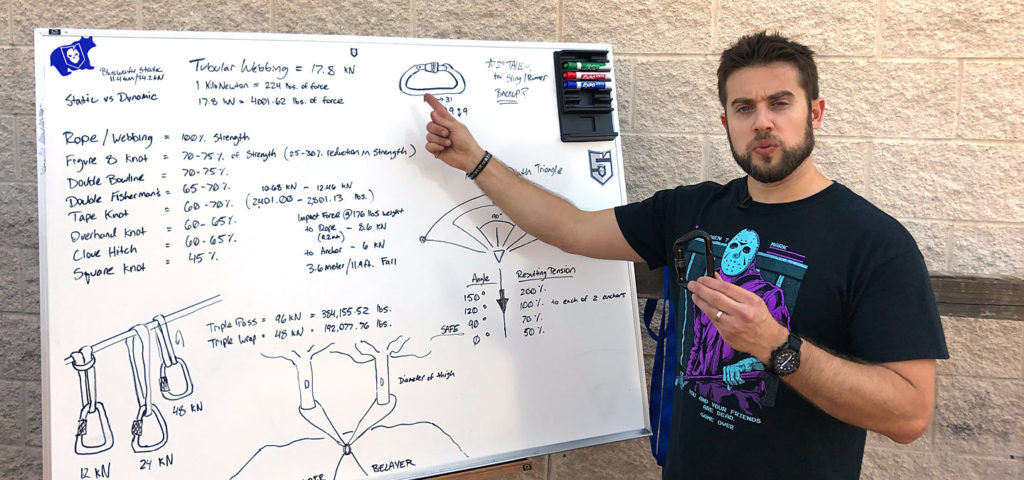I have a confession to make. Apart from how much I love tying knots our Knot of the Week series, I also geek out about the numbers behind them. That also goes for climbing and rigging things like top roping and rappelling. Contrary to popular belief, math is important in climbing, even though it’s not discussed as much as it should be.
Today I’d like to get into more of an advanced application for knots and really speak to the “why” behind what makes some knots, like the Tape Knot, better than others. I’ll also be discussing tubular webbing in detail and get into the pitfalls to avoid when rigging it during climbing, top roping, or rappelling applications. This includes the dreaded American Death Triangle.
I’ve never been a huge fan of math, but something about the numbers I discuss below really resonate with me and help me to understand what’s truly at play when I rig something that I’m literally putting my life on the line with. Hopefully this information resonates with you as well and you get a lot out of the information in the video below.
As I mentioned in the video, you’ll meet all kinds of differing opinions on “how” to rig things like a top rope or a rappel. However, the numbers I’ve stated here don’t lie and when it comes to those, there’s only one way to interpret them. I’d love to hear any comments and questions you might have in the comments below. I enjoy hearing other’s opinions on these principles as well.
